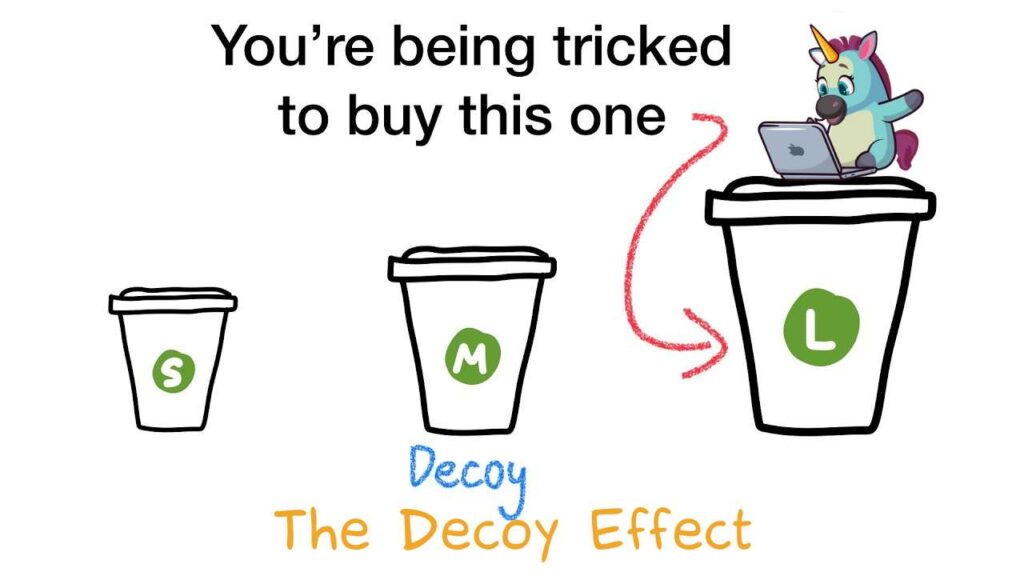
I am pretty sure you have experienced this scenario:
You’re browsing through a SaaS product’s pricing page, trying to decide which plan to go for.
Suddenly, you find yourself drawn to a particular option, even though it wasn’t your first choice.
What just happened?
Congrats, you’ve just been tricked by the Decoy Effect!
This sneaky little psychological trick is the secret weapon of seasoned marketers.
They know that by throwing in a less attractive option, they can make their desired plan look like the deal of the century.
It’s like a Jedi mind trick for your wallet – before you know it, you’re handing over your credit card details and wondering how you got there.
🧠 The Science Behind

Behavioral economics
Alright, let’s dig into the juicy science behind this brain trickery.
Behavioral economics tells us that when we’re faced with multiple choices, our minds tend to make comparisons rather than looking at each option objectively.
That’s where the decoy comes in – it’s the “ugly duckling” of the bunch, carefully designed to make the target option shine like a diamond.
By presenting a less appealing decoy, marketers tap into our built-in desire to snag the best possible deal.
It’s like a psychological sleight of hand that steers us toward the choice they want us to make.
Pretty sneaky, right?
But hey, you can’t blame them – it’s just smart marketing!
🪄 Putting the Decoy Effect to Work in Your SaaS

Ready to join the ranks of the SaaS sorcerers and take advantage of the power of the Decoy Effect?
Here’s how:
- Choose your target plan – the one you want your users to pick.
- Create a decoy plan that’s similar to your target but slightly less awesome in terms of features or pricing.
- Display these plans side by side so your users can’t help but compare them.
- Make sure to play up the unique perks and benefits of your target plan so it looks like the obvious winner next to the decoy.
- Keep testing and tweaking your decoy strategy until you find the sweet spot that makes your users tick.
Focus on providing real value and guiding your users toward the plans that genuinely meet their needs.
Tricking them into buying stuff they don’t want will only come back to bite you in the ass.
🌟 SaaS-y Decoy Effect Examples to Inspire You

Want to see some real-world examples of the Decoy Effect in action?
These SaaS giants have got it down to a science:
– Evernote’s pricing: The “Premium” plan at $7.99/month looks like a no-brainer compared to the “Business” decoy at $14.99/user/month.
– Grammarly’s plans: The “Premium” tier at $12/month seems like the obvious choice next to the “Business” decoy at $12.50/user/month.
– Calendly’s scheduling: The “Premium” plan at $8/user/month is far more appealing than the pricier “Pro” decoy at $12/user/month.
– Todoist’s pricing: The “Pro” plan at $4/month looks like a steal compared to the “Business” decoy at $6/user/month.
By studying these SaaS wizards and their pricing page prestidigitation, you can discover the psychological patterns and persuasive triggers that charm your own target audience.
Take a page from their spellbooks and start conjuring up your own Decoy Effect magic.
Create a pricing strategy that taps into your users’ minds, guides their choices, and makes your desired plan shine like the enchanting gem it is.


Leave a Reply